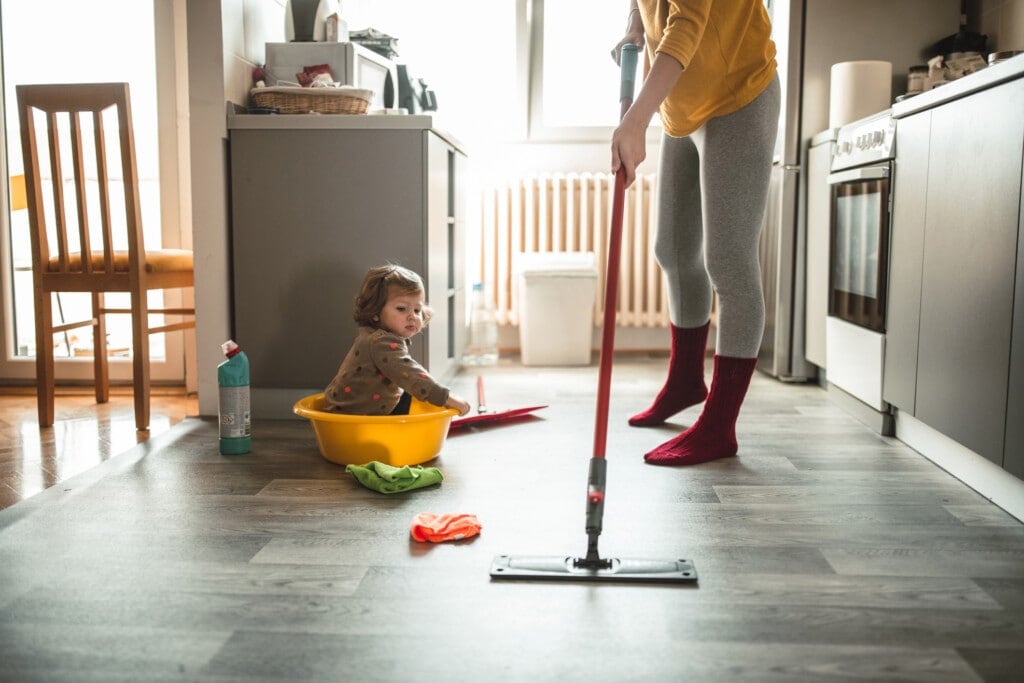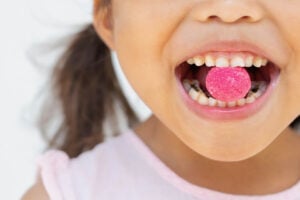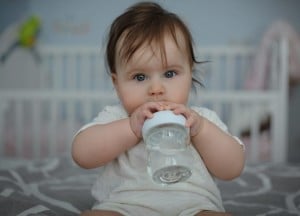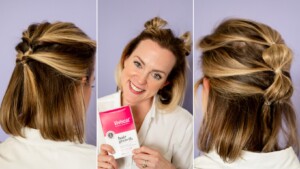You may have heard a lot of buzz in recent years about hidden toxins in your food, hair care products, and cleaning supplies. With headlines and debates taking over your social media news feed, it can be pretty overwhelming to determine what’s bad and what isn’t.
Are sulfates bad? What about chlorine? Is the laundry detergent you’re using truly harmful to you and your family? To clear up some of the consumer noise, we’ve cross-checked a list of potentially harmful toxins that are lingering in your house and what you can use in place of them.
Hidden Toxins in Your Kitchen
Bisphenol A (BPA)
Ah, yes, BPA. This chemical compound topping the list may not come as a surprise. Within the last decade, many scientific findings have unveiled health risks associated with exposure to BPA–including harmful effects on the brain and prostate gland of fetuses, babies, and kids.1 Additional studies have found a possible connection between BPA and diseases, such as cancer, diabetes, obesity, and reproductive, neuroendocrine, and immune system disorders.2
Hiding Spot:
Since the ’50s, BPA has been used in various plastic—and resin-based products that are sneaking around in your kitchen cupboards. Everyday things like reusable food containers, plastic wrap, water bottles, inside the lining of canned foods, and even baby bottles. The industrial chemical can then seep into the food or beverages stored within these items.
To refrain from using BPA products in your household, it may be best to opt for glass containers instead of plastic. Also, cut back on purchasing canned produce (remember, fresh is best!). And refrain from heating your reusable containers in the microwave or placing them in the dishwasher. The heat can cause the product to break down over time and allow BPA to get into the food.
Sodium Hydroxide
Also known as lye or caustic soda, Sodium Hydroxide is an odorless, irritating, and highly corrosive substance made of white, solid crystals that can absorb moisture in the air.
Hiding Spot:
Sodium Hydroxide is most commonly used in drain and oven cleaners, as it can easily cut through grime and grease. While a sparkling oven and unclogged drain sound like a good days’ cleaning, exposure to the compound can be very harmful. According to the Center for Disease Control, sodium hydroxide can cause temporary hair loss, severe burns to eyes, skin, and inner membranes, and permanent damage to any tissue that it comes in contact with.3 If inhaled, it can also lead to an accumulation of fluid in the lungs and make your larynx swell.
Be sure to not pour lye down the drain, into your toilet, or toss in your trashcan to dispose of. Instead, contact your local hazardous waste collection agency for specific disposal instructions.
Triclosan
Developed in the 1960s, triclosan is an antibacterial agent commonly used to reduce and prevent bacterial contamination. Although incorporating triclosan in many consumer products came from positive intentions, the ingredient can put you and your little ones in harm’s way.
In December 2017, however, the U.S. Food and Drug Administration (FDA) issued a final rule requiring the removal of triclosan in over-the-counter antiseptics because it is not “recognized as safe and effective due to insufficient data.”4
Hiding Spot:
The FDA requires the omission of triclosan in over-the-counter products. But be sure to double-check your antibacterial soaps and liquid dishwashing detergents to ensure there isn’t any triclosan lurking in the ingredient list.
Hidden Toxins in Your Bathroom
Sodium Lauryl Sulfate
If you’ve been adopting the clean hair product method at home, you’re likely familiar with sodium lauryl sulfate (SLS). As a surfactant, SLS creates a rich lather in beauty products and traps oil and dirt that’s rinsed away with water. It can strip the skin and hair of its natural oils, leading to allergic reactions, dry skin, and irritation to your eyes, skin, and mouth.
Hiding Spot:
SLS can be found in shampoos, body wash, facial cleansers, bubble baths, and bath bombs since it can create foam. A 2015 report from the National Institutes of Health discovered that products with more than 2% of SLS could cause skin irritation, which is lower than the actual levels found in most items today. According to the findings, there are SLS concentrations in up to 50% of personal care products and up to 30% in common household cleaning agents.5
When shopping for shampoos and bubble baths for your little one, look to sodium coco sulfate, made from coconut oil, as an alternative in your beauty supplies.
Phthalates
Often called plasticizers, phthalates are a group of synthetic chemicals used to make plastics softer, more durable, and flexible. The Harvard T.H. Chan School of Public Health recently revealed that phthalates, as hormone-disrupting chemicals, can increase the risk of both miscarriage and gestational diabetes.6 Additional research has also found that prenatal exposure can impair a fetus’ brain development and increase the risk of learning, attention, and behavioral disorders.7
Hiding Spot:
Phthalates are just about everywhere and in most items we use in everyday life. They can be found in perfumes, lotions, air fresheners, nail polish, carpeting, shower curtains, vinyl flooring, building materials, and the list goes on. Even foods are linked to higher levels, like cooking oils, fatty meats and poultry, high-fat dairy, and fast foods.
Feel some comfort from the fact that, of the phthalate family (which includes a good number of siblings), several are permanently banned from toys and products that help youngsters under three years old sleep, eat, teethe, or suck.
To further keep your household in good hands, avoid plastic as much as possible. Also, say yay to organic produce, dairy, and meats.
Fragrances
From soothing lavender and citrusy lemons to seasonal pumpkin and freshly picked apples, the number of fragrances is endless. Unfortunately, there’s no telling what exactly makes up these scents that we’re breathing in or putting on our bodies.
The word fragrance is simply a blanket term for about 4,000 individual chemicals incorporated into everyday supplies.8 To make matters worse, these chemicals do not need to be disclosed under the trade secret law. This protects the formula behind the manufacturers’ scents, leaving consumers only to find the word “fragrance” or “perfume” on a product label.
Hiding Spot:
Fragrances are everywhere. They’re in our laundry detergents, fabric softeners, soaps, face creams, body washes, makeup, you name it. Our daily lives are inundated with scents we can’t escape. While we may love the way it makes our home, car, or skin smell, research has found that some of the chemicals in fragrances are linked to allergies, cancer, disrupting hormones, and reproductive and developmental toxicity.9
When shopping, keep an eye out for fragrance-free items to ensure it doesn’t contain any artificial aromas. Be wary of “unscented” labeling that may still incorporate chemicals that help to omit scents.
Hidden Toxins in Your Laundry Room
Chlorine
It should be expected that the go-to product for whitening our clothes and cleaning our pools can be toxic. Chlorine is a chemical element used as a disinfectant to kill bacteria. At the core, it is meant to do more good than bad. However, it is harmful if inhaled in its natural gas form, acting as a respiratory irritant.
Breathing in the gas could also lead to pulmonary edema—a condition caused by excessive buildup of fluid in the lungs—or cause eye and skin irritation, difficulty breathing, sore throat, wheezing, and chest tightness according to the New York State Department of Health.10
Hiding Spot:
This toxin hides out in laundry whiteners, toilet bowl cleaners, and mildew removers, to name a few. Despite loving the brightness of your white clothes fresh out of the wash, it’s best to turn to a more natural alternative like baking soda or vinegar.
Quaternary Ammonium Compounds
Quaternary Ammonium Compounds, also known as quats or QACs, are a group of chemicals that act as an antistatic agent, disinfectant, preservative, surfactant, and sanitizer. While it can kill bacteria, fungi, and viruses, quats are classified as pesticides and regulated as pesticides by the U.S. Environmental Protection Agency.11
Several quats found in commercial and household items have been linked to a decrease in fertility, based upon research in recent years.12 Breathing them in can also trigger upper respiratory tract irritations and asthma symptoms and irritate the nose and throat.
The Hiding Spot:
Say hello to quats in dryer sheets and fabric softeners in your laundry room. They’re also found in disinfectant wipes and hand sanitizers that may be stashed in your car and purse. If you want to keep the fresh scent of clothes after they’ve been removed from the dryer, swap dryer sheets for a wool dryer ball.
Contact your local hazardous waste facility if you’re concerned about using these hidden toxins in your home and want to remove them safely. They can come to collect the items and dispose of them for you, so you don’t have to.
Next on your list? A shopping trip for safer alternatives without these nasty toxins!






























